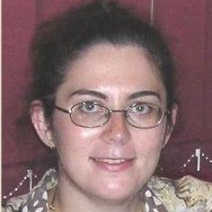Advances in Remote Sensing Applications in Natural Hazards Research
A special issue of Remote Sensing (ISSN 2072-4292). This special issue belongs to the section "Earth Observation for Emergency Management".
Deadline for manuscript submissions: 15 June 2024 | Viewed by 3945
Special Issue Editors
Interests: ionosphere; VLF/LF signals; remote sensing; natural hazards
Special Issues, Collections and Topics in MDPI journals
Interests: My field of interest is influences of the sun on the atmospheric processes and environment on earth. In last few years my team and I have tried to develop models by which the relationship can be explained between the influx of charged particles from the sun and forest fires. Additionally, I am involved in the research of physical geography, natural hazards and tourism.
Special Issues, Collections and Topics in MDPI journals
2. Faculty of Mathematics, University of Belgrade, Studentski Trg 16, Belgrade, Serbia
Interests: active galactic nuclei; gravitational lensing; plasma physics; ionosphere
Special Issues, Collections and Topics in MDPI journals
Special Issue Information
Dear Colleagues,
Natural disasters are phenomena whose impact on the lives and health of people and other living beings is very often tragic. Unfortunately, many of these phenomena are very difficult or still impossible to predict with sufficient temporal and spatial precision. Therefore, all research in this area is very important.
Different techniques based on remote sensing are constantly being developed, which, among others, affects the research of natural hazards, as well as the possibilities for predicting natural disasters and developing procedures for gathering information necessary for emergency management. In this Special Issue, we emphasize multidisciplinarity in relevant research and point out the importance of integrating science, technology, engineering, programming, and other activities in order to make faster and more efficient progress in reducing the risk of natural disasters such as earthquakes, volcanic eruptions, tropical cyclones, and other meteorological phenomena, as well as in order to develop emergency management.
This Special Issue aims to present new research in this area and its practical applications. This Special Issue welcomes papers related to natural hazards and disasters, including the following:
- Remote sensing of different Earth systems;
- Modeling of different terrestrial areas using data obtained through various types of remote sensing;
- Possible applications of conclusions derived from the processing and modeling of relevant data.
Additionally, other papers that deal with the applications of remote sensing related to natural hazards and disasters are welcome.
Dr. Aleksandra Nina
Prof. Dr. Milan Radovanović
Prof. Dr. Luka Č. Popović
Guest Editors
Manuscript Submission Information
Manuscripts should be submitted online at www.mdpi.com by registering and logging in to this website. Once you are registered, click here to go to the submission form. Manuscripts can be submitted until the deadline. All submissions that pass pre-check are peer-reviewed. Accepted papers will be published continuously in the journal (as soon as accepted) and will be listed together on the special issue website. Research articles, review articles as well as short communications are invited. For planned papers, a title and short abstract (about 100 words) can be sent to the Editorial Office for announcement on this website.
Submitted manuscripts should not have been published previously, nor be under consideration for publication elsewhere (except conference proceedings papers). All manuscripts are thoroughly refereed through a single-blind peer-review process. A guide for authors and other relevant information for submission of manuscripts is available on the Instructions for Authors page. Remote Sensing is an international peer-reviewed open access semimonthly journal published by MDPI.
Please visit the Instructions for Authors page before submitting a manuscript. The Article Processing Charge (APC) for publication in this open access journal is 2700 CHF (Swiss Francs). Submitted papers should be well formatted and use good English. Authors may use MDPI's English editing service prior to publication or during author revisions.
Keywords
- natural hazards
- natural disasters
- remote sensing
- modelling
- emergency management






